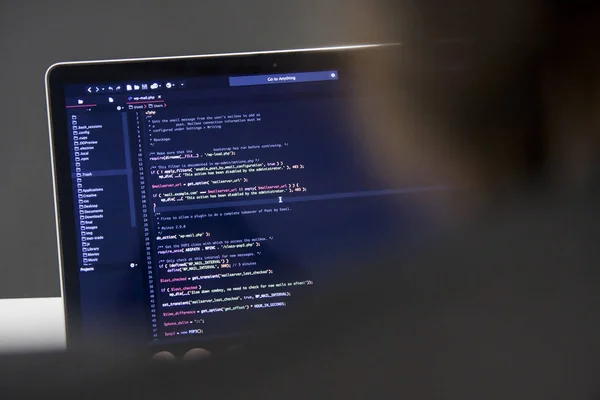Introduction to Solana
Solana is a high-performance blockchain platform that offers developers a fast, secure and scalable platform for building decentralized applications. Its innovative consensus mechanism, Proof of History, allows it to achieve high throughput and low transaction fees while maintaining decentralization. With its growing ecosystem and support for smart contracts, Solana is quickly becoming a popular choice for developers looking to build the next generation of decentralized applications.
Setting Up Your Development Environment
To start developing on Solana, you’ll need to set up your development environment. This includes installing the Solana command-line tools, setting up a wallet, and familiarizing yourself with the Solana programming model. You can find detailed instructions on how to do this in the Solana documentation. Additionally, you may want to consider using a framework like Anchor, which can help streamline the development process.
Building Your First Solana Application
Once your development environment is set up, you can start building your first Solana application. Solana supports a variety of programming languages, including Rust and C, so you can choose the language that you’re most comfortable with. Start by exploring the Solana documentation and examples to get a feel for how to build on the platform. Then, begin by building a simple application, such as a token or a decentralized exchange, to get hands-on experience with Solana’s features.
Deploying Smart Contracts on Solana
Deploying smart contracts on Solana is a straightforward process. You’ll need to compile your contract, deploy it to the blockchain, and then interact with it using the Solana command-line tools or a web interface. It’s important to thoroughly test your contract before deploying it to the mainnet, as any bugs or vulnerabilities could have serious consequences.
Step-by-Step Guide: Crafting a Basic Smart Contract on Solana
use solana_program::{
account_info::AccountInfo, entrypoint, entrypoint::ProgramResult, hash::Hash,
pubkey::Pubkey,
};
entrypoint!(process_instruction);
fn process_instruction(
program_id: &Pubkey,
accounts: &[AccountInfo],
_instruction_data: &[u8],
) -> ProgramResult {
// Fetch the latest blockhash
let blockhash: Hash = ...; // Implementation to retrieve the latest blockhash
// Convert the blockhash to a number
// This is a simple example of how you might convert a Hash to a number
let random_number = u64::from_le_bytes(blockhash.to_bytes()[..8].try_into().unwrap());
// Logic to use the random number
// ...
Ok(())
}
Key Aspects of This Contract:
- Entrypoint: The
entrypoint!macro is used to declare the entry point of the smart contract. - Process Instruction: The
process_instructionfunction is the main handler for the smart contract. It receives data about the program’s invocation, including the program ID, accounts involved, and instruction data. - Fetching the Latest Blockhash: The contract needs to retrieve the latest blockhash. This is a placeholder in the code, as fetching the latest blockhash would typically involve interacting with the Solana runtime, which may require specific permissions or a different approach depending on the context.
- Random Number Generation: The blockhash is used as the basis for generating a random number. This example simply converts the first 8 bytes of the blockhash to a
u64, but more complex methods could be used depending on the level of randomness and security required. - Usage of Random Number: The generated random number can then be used within the smart contract for various purposes, such as in games, lotteries, or decision-making processes.
Important Considerations:
- Determinism: Blockchains are deterministic systems, so the “randomness” derived from block properties might be predictable to some extent. This approach is not suitable for applications requiring high-security randomness, like cryptographic applications.
- Implementation Details: Actual implementation to fetch the latest blockhash and convert it to a random number might vary. This code is a basic template and would need to be adapted for practical use in a Solana program.
- Testing and Deployment: Before deploying a smart contract on Solana, thorough testing is crucial. Additionally, deploying contracts to the Solana blockchain requires a Solana environment setup and potentially SOL tokens to cover transaction and deployment costs.
For more detailed information and guidance on Solana smart contract development, you should refer to the Solana Developer Documentation.
Solana’s Key Features for Developers
Solana offers several key features that make it an attractive platform for developers:
- High throughput: Solana’s consensus mechanism allows it to process tens of thousands of transactions per second.
- Low fees: Transaction fees on Solana are a fraction of a cent, making it an affordable platform for building decentralized applications.
- Scalability: Solana’s architecture is designed to scale with demand, so your application can grow without hitting performance bottlenecks.
Best Practices for Solana Development
When developing on Solana, it’s important to follow best practices to ensure the security and performance of your application. This includes:
- Writing efficient code: Solana’s high throughput means that your code needs to be efficient to take full advantage of the platform’s capabilities.
- Thoroughly testing your contract: Deploying a smart contract on Solana is a significant responsibility, so make sure to thoroughly test your contract before deploying it to the mainnet.
- Keeping up with updates: Solana is a rapidly evolving platform, so make sure to stay up-to-date with the latest changes and updates.
Comparison Table: Solana vs. Other Blockchain Platforms
| Feature | Solana | Ethereum | Binance Smart Chain |
|---|---|---|---|
| Throughput | High | Medium | High |
| Fees | Low | High | Low |
| Scalability | High | Low | Medium |
| Consensus Mechanism | Proof of History | Proof of Work / Proof of Stake | Proof of Staked Authority |
Conclusion
Solana is a powerful platform for building decentralized applications, offering high throughput, low fees, and scalability. By following the steps outlined in this guide, developers can set up their development environment, build and deploy their first Solana application, and take advantage of the platform’s key features. With best practices in mind, developers can create secure and efficient applications that leverage Solana’s innovative technology.
